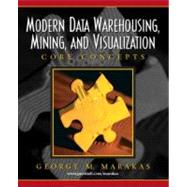
George M. Marakas is an Associate Professor of Information Systems and the BAT Faculty Fellow in Global IT Strategy at the Kelley School of Business at Indiana University in Bloomington. His teaching expertise includes systems analysis and design, technology-assisted decision making, managing IS resources, behavioral IS research methods, and data visualitation and decision support. In addition, Marakas is an active researcher in the area of systems analysis methods, data mining and visualization, creativity enhancement, conceptual data modeling, and computer self-efficacy. Dr. Marakas is a world-renown author of textbooks. Including this text, he has written Systems Analysis and Design: An Active Approach and Decision Support Systems in the 21st Century, Second Edition, both published by Prentice Hall.
Marakas received his doctorate in Information Systems from Florida International University in Miami and his MBA from Colorado State University. Prior to his academic career, he enjoyed a highly successful career in the banking and real estate industries. His corporate experience includes senior management positions with Continental Illinois National Bank and the FDIC. In addition, Marakas served as president and CEO for CMC Group, Inc., a major RTC management contractor in Miami, for 3 years.
During his tenure at the University of Maryland and now at Indiana University, Marakas distinguished himself both through his research and in the classroom. He received numerous national teaching awards, and his research has appeared in the top journals in his field.
Beyond his academic endeavors, Marakas is also an active consultant and serves as an advisor to a number of organizations including the Central Intelligence Agency, the Department of the Treasury, the Department of Defense, British-American Tobacco, Xavier University, Citibank Asia-Pacific, Nokia Corporation, Eli Lilly Corporation, and United Information Systems, among many others. His consulting and executive education activities, spanning five continents, are concentrated primarily on e-commerce strategy, workflow reengineering, CASE tool integration, and global IT strategy formation. He is a Novell Certified Network Engineer and has been involved in the corporate beta testing program for Microsoft Corporation since 1990. Marakas is also an active member of a number of professional IS organizations, an avid golfer, a second-degree black belt in Tae Kwon Do, a PADI-certified divemaster, and a member of Pi Kappa Alpha fraternity.
The New copy of this book will include any supplemental materials advertised. Please check the title of the book to determine if it should include any access cards, study guides, lab manuals, CDs, etc.
The Used, Rental and eBook copies of this book are not guaranteed to include any supplemental materials. Typically, only the book itself is included. This is true even if the title states it includes any access cards, study guides, lab manuals, CDs, etc.